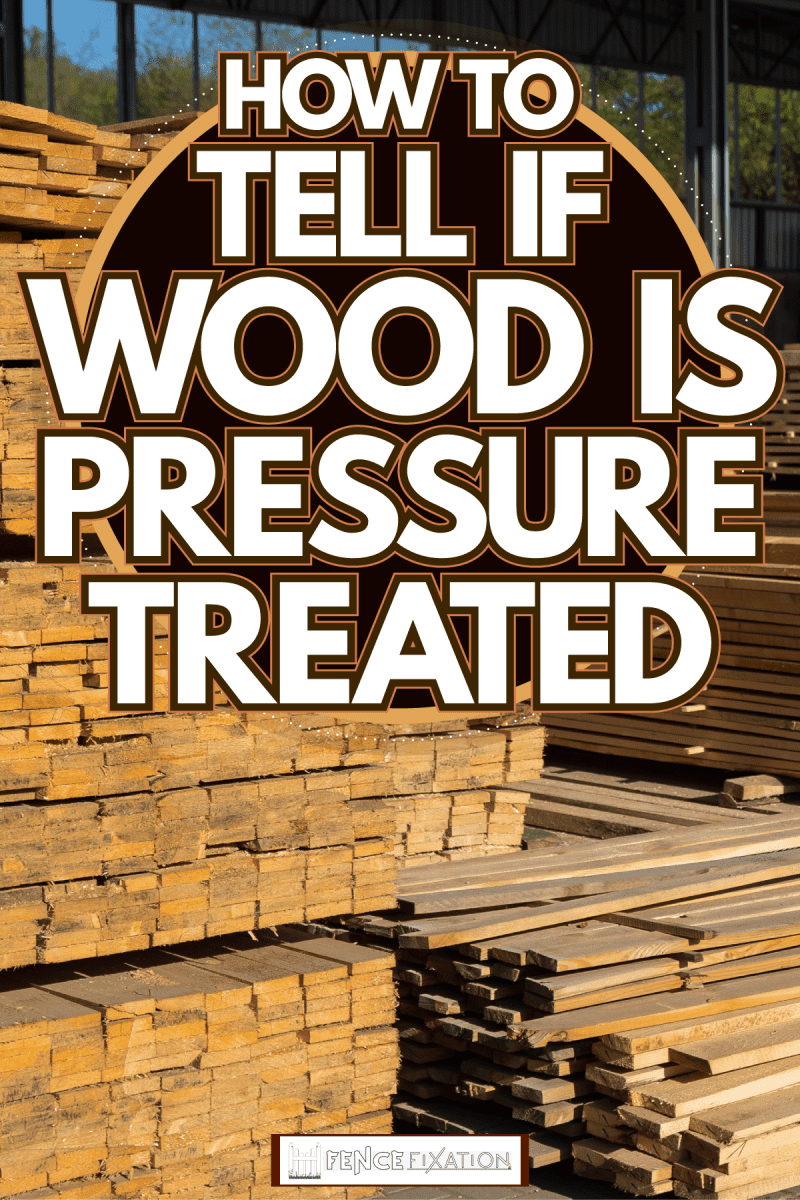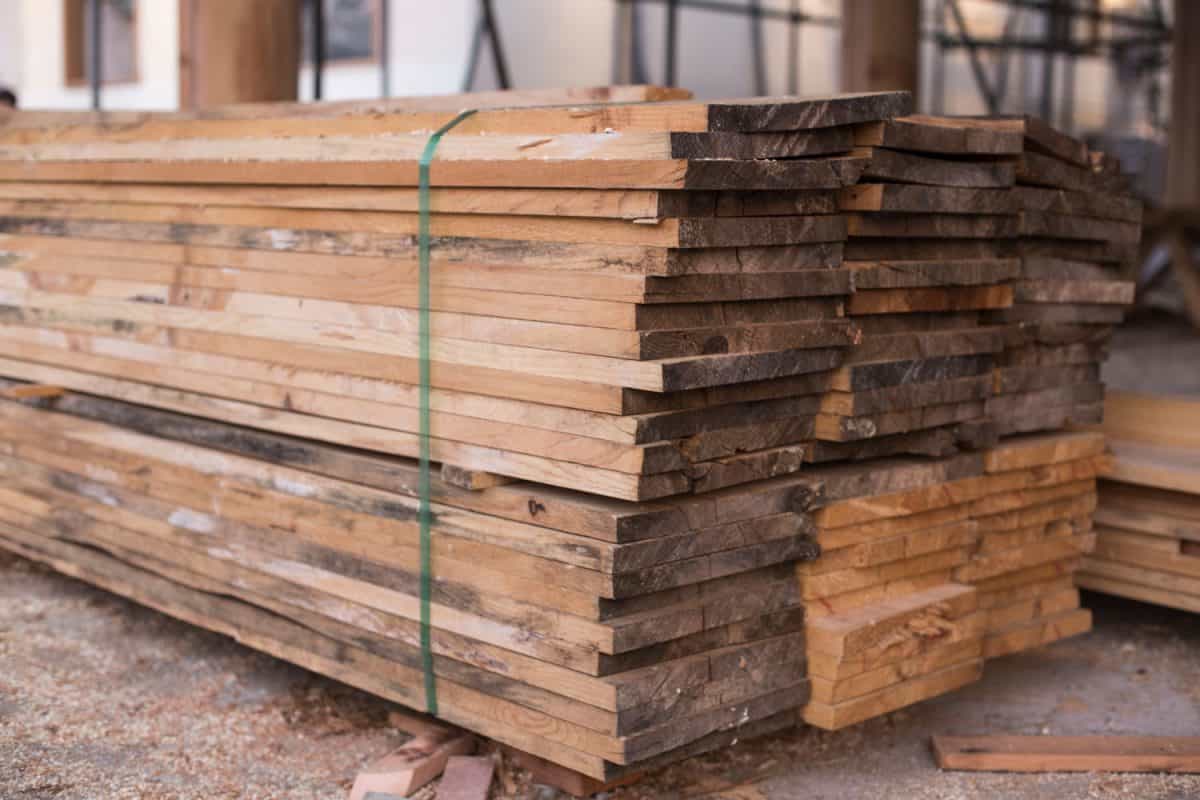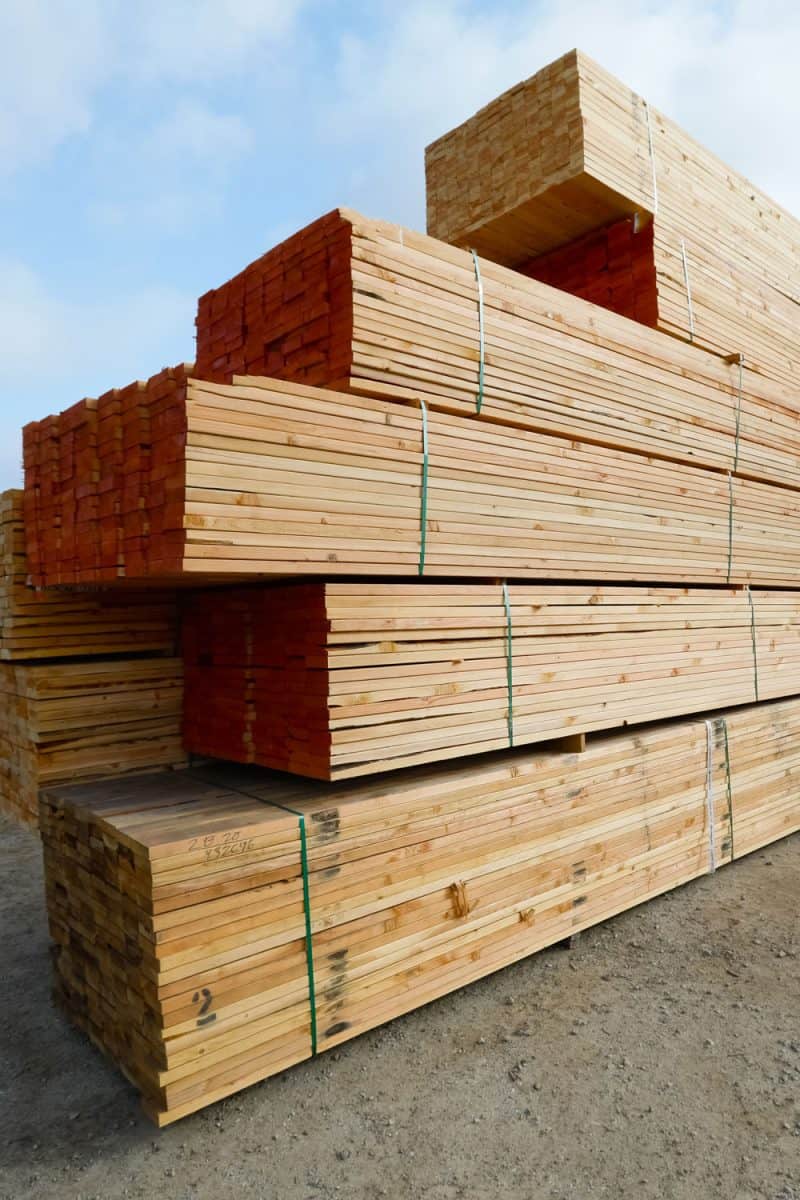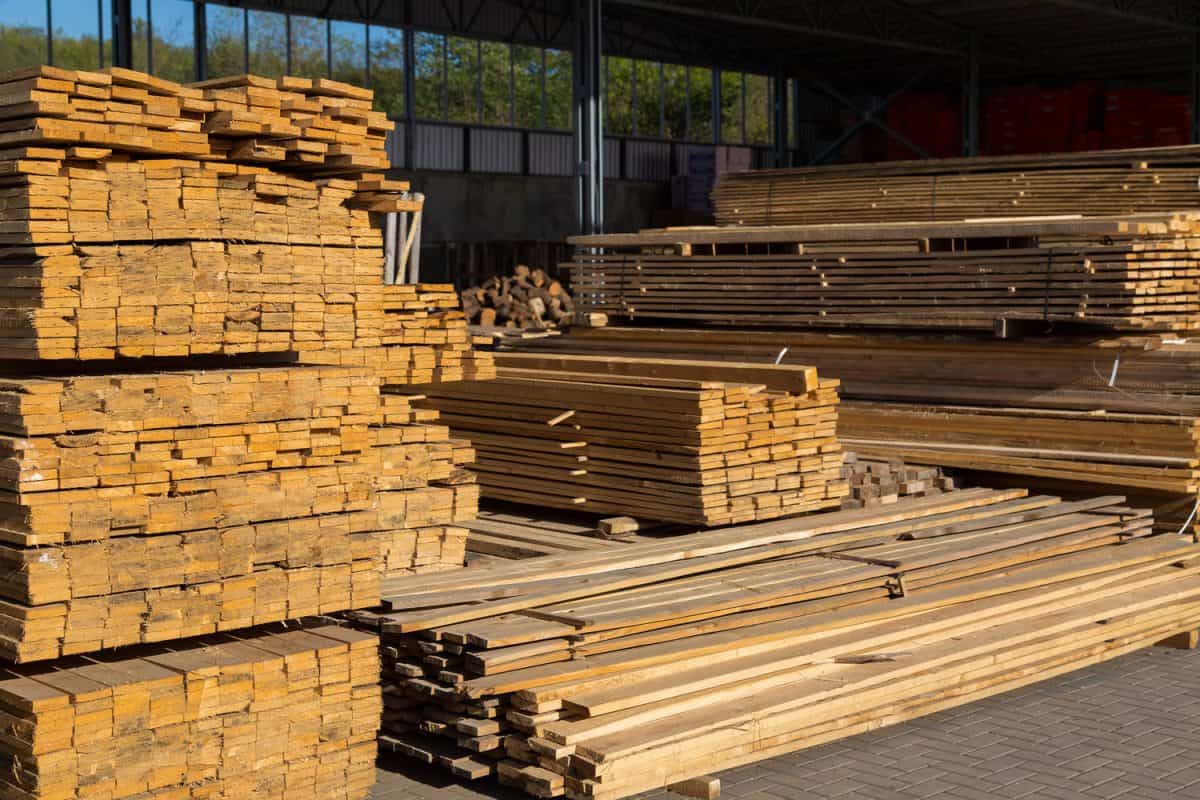Starting a project involves various considerations such as the material, structure, actual construction, costs, and maintenance. Starting with materials, if you're selecting wood you might wonder how to tell it is pressure treated. We've researched what to look for to identify pressure treated wood.
Pressure-treated wood can be identified by its greenish color, oil-like smell, and dimensions. Most manufacturers provide stamps that give the specific process and chemical agents used.
Wood can rot or decay easily compared to other building materials. While this holds to be true, its beauty is still encompassing. We will guide you in choosing the best-pressurized wood for your landscaping or home interior projects.

What Is Pressure Treatment?
Pressure treatment is the process in which preservatives are added to the cellular structures of the wood. These chemicals will act as a barrier that protects the lumber against decay, insect infestations, and harsh weather conditions.

The wood will first undergo incision - the surface is pierced with small slits - so that the chemicals are properly distributed within its cell walls. After incision, the moisture is removed, then the lumber will be placed inside a pressure tank where chemical preservatives are introduced.
Pith, Heartwood, Or Sapwood
Before you identify if it is pressure treated or not, one more important consideration comes into place. What part of the tree did the lumber actually come from - pith, heartwood, or sapwood. They determine the strength of the wood. These portions are seen on the topmost part of the lumber.
Take a closer look at the rings because this will help you identify which are the strongest and weakest portions. You might want to avoid selecting the pith and sapwood portions of the lumber simply because they are considered the weakest part.
The sapwood is the outermost layer and it contains the bark of the tree. Here, the rings' appearance is half a circle and are less dense. Since the bark is included, it is more prone to moisture seepage.
The pith is the center portion of the tree and the presence of a ring would confirm this, it is not a good choice for lumber either since it represents the growth area and is immature and weaker.
The heartwood is the most durable portion since it has denser rings - the appearance of these rings is similar to sapwood. Take note, the denser the rings, the stronger the wood and the longer the material would last.
The lumber on the right is less durable because it consists of the pith (presence of the ring). The wood on the left is stronger because the rings are dense.
How To Tell If Wood Is Pressure Treated
1. Look For A Stamp Or End Tag
The stamp or end tag determines if the wood is pressure-treated or not. It includes the preservative used, the class of the wood - where it is most suitable to use, retention level, and if the wood has been inspected for safety purposes. If you see either "PT" (Pressure Treated) or "GC" (Ground Contact), then the wood is indeed pressurized.
Preservatives Used
If the stamp includes L-P22, the wood contains arsenic - the most toxic chemical preservative in the wood industry. It is not suitable for indoor and residential uses. On one hand, L-P2 is less toxic, however, it is still not safe for interior structures or panelings.
Wood Class
You should look for copper-based chemicals used during pressure treatment.
UC or Use Class is the classification of the best and most suitable wood application. UC1 and UC2 are both ideal for indoor use, UC3A and UC3B are for above-ground outdoor applications such as protected decking, stairs, railings, and fence boards or pickets.
UC4A is best used for fences or any other landscaping home projects that have direct contact with the ground. These ratings vary depending on the number of preservatives added to the wood.
Retention Level
The retention level indicates the amount of preservative that remains in the wood after completing the treatment process. This index gives reference to the general quality of the wood material. It determines the lumber’s most appropriate application. Retention levels are represented by the amount or weight of preservatives present per unit area of the material.
For instance, a UC4A wood that has 0.6 kilograms per cubic meter (kg/m3) of preservatives. This makes it most suitable for outdoor use - direct contact with the ground. On one hand, 0.2 kg/m3 has a lower retention level which is why it is mainly used for indoor projects.
The higher the retention level, the more preservatives are induced in the lumber. This makes it stronger and long-lasting.
2. Request For A Fact Sheet
A fact sheet basically includes a list of chemicals used in the pressure treatment.
Copper-based preservative is presently used due to its resistance to harsh conditions, and it adheres deeply to the wood fibers for better protection against moisture and decay.
Alkaline Copper Quaternary (ACQ), Copper Azole (CA), and Micronized Copper Quaternary (MCQ) are the acronyms you will see on the fact sheet. You may want to avoid purchasing lumber with Chromate Copper Arsenate (CCA) because it is highly toxic, especially for residential use.
3. Inspect The Color

The color mainly depends on the kind of preservatives added to the lumber. Pressurized wood is brown, tan or olive, dark, and green. Borate preservatives will retain the natural color of the wood. It is best to avoid light-green wood color because it is treated with CCA.
Note:
Dark wood colors are treated with oil-based preservatives - creosote. This chemical is not safe for residential or home use because it is a health hazard. It is mainly used in infrastructures that do not require people to have direct contact with it.
4. Smell The Wood
Untreated wood has a fresh natural scent while pressurized wood has a distinct oily and chemical-like smell except for lumber treated with CCA, they do not have any odor.

If you are having doubts about whether the wood is arsenic or not, identify its date of production. CCA has been prohibited since 2003. Any lumber manufactured before that year has a great possibility of being treated with arsenic.
5. Use A Wood Testing Kit
Using a wood testing kit is the easiest way to determine if the lumber is treated or not. There is also a specific type that can identify if arsenic is present in the wood.
Check out Arsenic Wood Field Testing Kit on Amazon.
How To Tell If Old or Used Wood is Pressure Treated?

Old wood, especially those that are already in use would have faded stamps or none at all. You may actually use the color of the lumber as your basis. Old pressure-treated wood becomes grayish and has an olive-green tint. A wood testing kit can also be used.
What Is Ground Contact?
Ground Contact is one of the determinants of the quality of your lumber. This would differentiate whether the quality of the wood could withstand ground contact. The lumber is basically embedded in the soil.
Wood parasites such as termites and fungi thrive in this medium making the portion of your post embedded in the soil more susceptible to rot and decay. Lumber that requires ground contact has a higher retention level.
In Closing

It is always important to identify if the wood is pressure-treated because this would affect the overall quality of the structure. We hope you have found this article helpful and informative.


![A grass meadow and a small fence next to a small pond, How Long Does Split Rail Fence Last? [And How To Prolong Its Life]](https://fencefixation.com/wp-content/uploads/2022/06/A-grass-meadow-and-a-small-fence-next-to-a-small-pond-600x400.jpg)

![White rail fence leading along cornfield and deep blue sky. How Tall Are Split Rail Fences [Inclding 2, 3, & 4 Rail Heights]](https://fencefixation.com/wp-content/uploads/2022/06/White-rail-fence-leading-along-cornfield-and-deep-blue-sky.-How-Tall-Are-Split-Rail-Fences-Inclding-2-3-4-Rail-Heights-600x400.png)